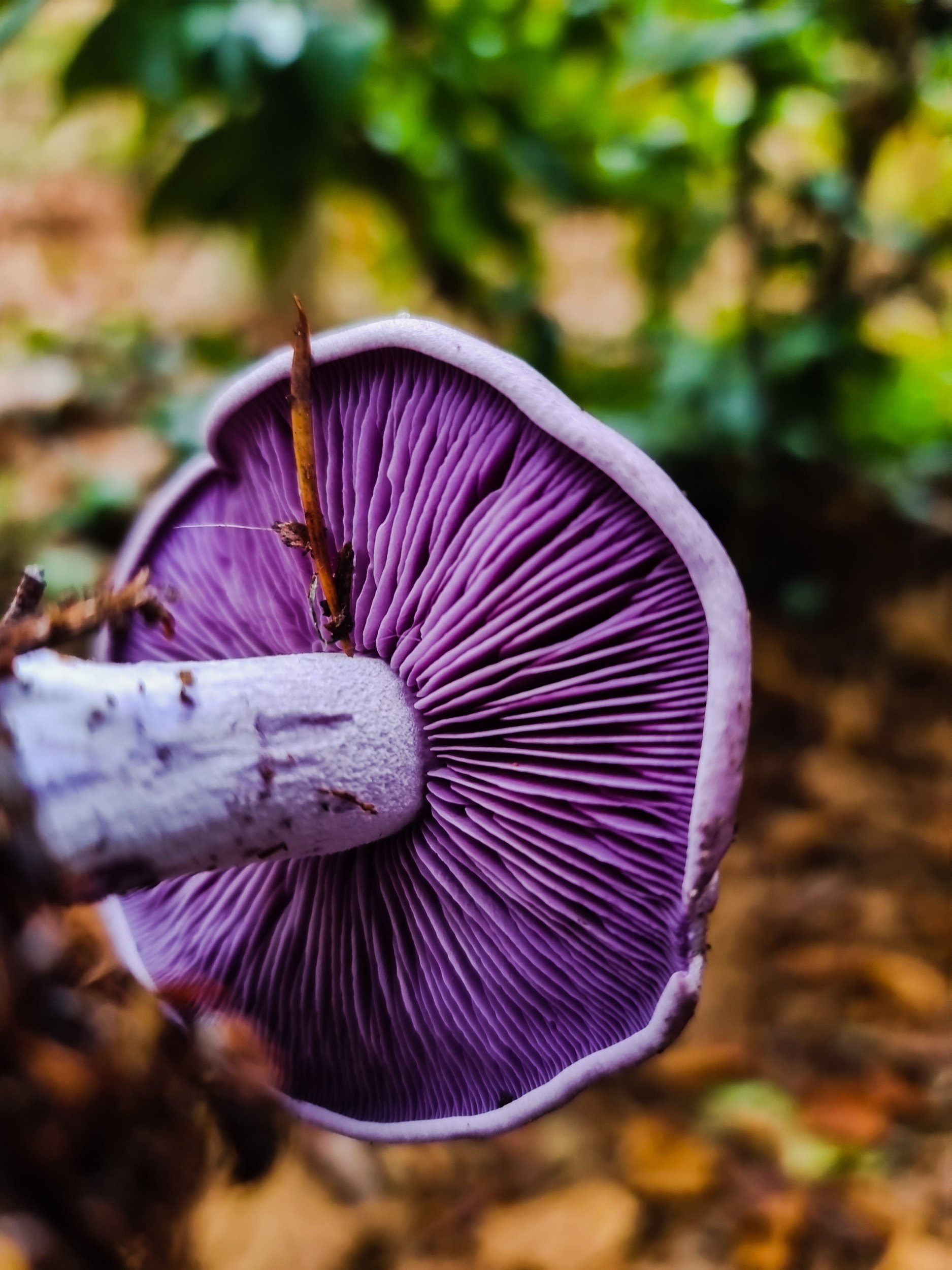Horn Of Plenty
Like black holes in the forest floor. A mushroom of many names and highly revered for its culinary uses.
Giant Puffball
A summer loving fungi that’s taken us an age to find! Whilst other people seem to find them frequently.
Black Locust
This non-native tree has beautifully scented flowers with a pea like flavour when eaten and jasmine essence when infused.
Flowering Currant
One of our favourite urban forages! The flowers appearing during spring have an absolutely stunning flavour.
Sweet Violet
An aromatic spring flower, our only native scented violet. Used for a long time in both culinary and cosmetic products.
Common Hazel
This hugely popular British tree has a seemingly endless amount of uses. Most popular are its nuts!
Scarlet / Ruby Elf Cups
These little guys shine bright in the winter months when most of the fungi kingdom is asleep. Fortunately for us foragers they’re edible both cooked and raw.
Wood Cauliflower
This mushroom makes its appearance during Autumn. A lovely looking fungi that looks more like coral than cauliflower. And tastes delicious too!
Pineappleweed
This member of the chamomile family gives of a beautiful pineapple taste and aroma.
Common Walnut
Another Roman entry in to the British countryside, cheers guys! Most commonly known for its nut. But there many more culinary applications for this tree…
Wild Fennel
This beautiful aniseed flavour plant doesn’t need much introduction. Well loved, the world over. Unlike its cultivated varieties, which are grown for their bulb, wild fennel is all about leaf & seed.
3 Cornered Leek
A gorgeous winter allium, much milder and sweeter than wild garlic. 3CL very much has its own place in gastronomy. And, being invasive, a sustainable eat!
Velvet Shanks
Velvet Shanks thrive in cold weather making them the perfect winter fungi forage.
Wood Blewit
Highly regarded by some. This mushroom usually fruits after the first frost, making it a great edible after warmer climate fungi have run their course.
'Wild' Horseradish
‘Wild’ horseradish is a naturalised plant throughout temperate Europe, originating from Asia, many moons ago.
Winter Chanterelle
Just as exquisite as their summer counterparts. Usually found growing in large numbers & they deal with winter frosts like absolute champions.






























